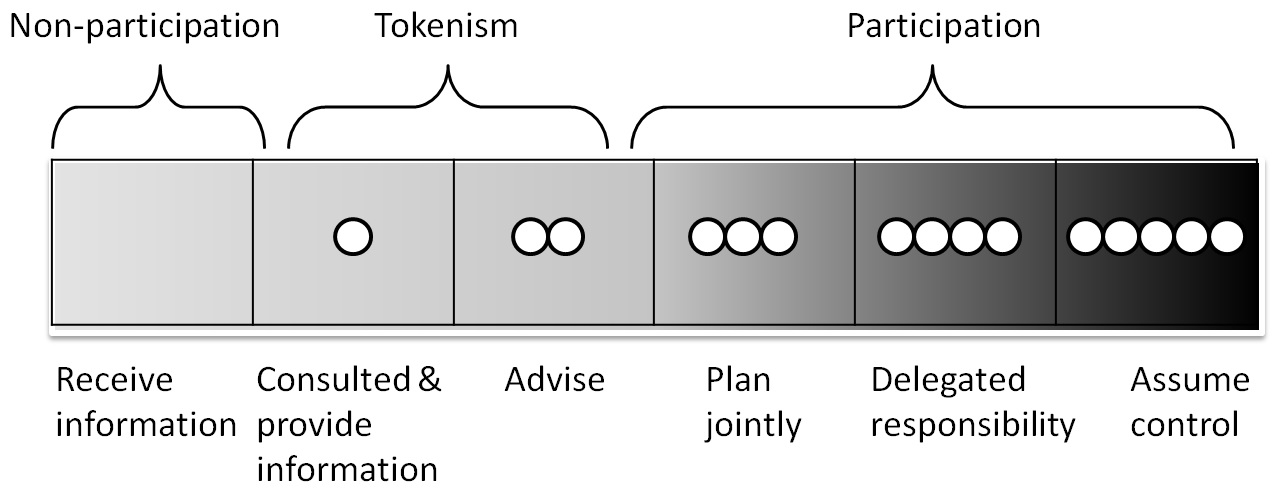Ladder of participation
Different degrees of participation in research by stakeholders.
This is useful for thinking about how involved your stakeholders are in your research. It is a scale that goes from no participation on the left, where stakeholders only receive information about your project, through to high levels of participation on the right. This participation can be where stakeholders jointly plan the research, have responsibility delegated to them for aspects of the research, or are put in control of the research.
 Categories of stakeholder participation in research projects.
Categories of stakeholder participation in research projects.
The ladder is useful for thinking about how involved stakeholders are throughout your research. It is also good for being transparent about roles and expectations.
The Stakeholder Engagement Matrix technique builds off the Ladder of Participation.
The ladder first developed by Sherry Arnstein in 1969 to describe different degrees of power that authorities provide citizens during public participation processes. Banfield and others reworked the ladder for research projects in 2011.
More information
A flexible framework for stakeholder engagement, integration and implementation insights.
Banfield, M., Yen, L. and Newby, L. (2011). Stakeholder involvement in primary health care research: Report and recommendations. Australian Primary Health Care Research Institute: Canberra, Australia. Online (PDF 612KB)

